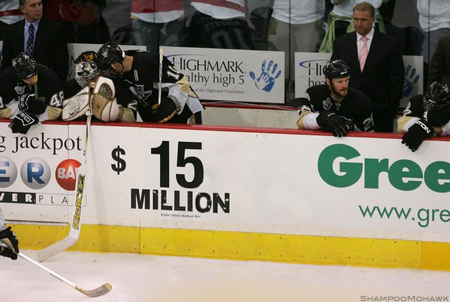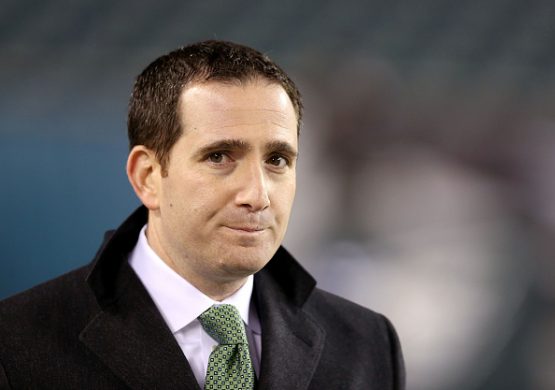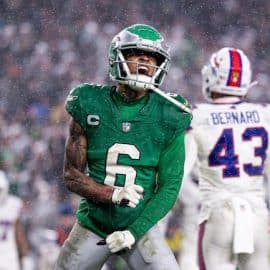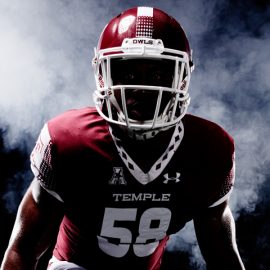The Doug Pederson offense asks Eagles receivers to read coverages and make adjustments based on what they see. In turn, the quarterback and receivers have to see the same thing and make the same mental adjustments. This is a different approach from Chip Kelly’s previous offense, and somewhat similar to the older Andy Reid offense of 1999-2003—before Andy switched gears and decided to feature a “speedy playmaking star receiver” as the focus of his passing attack.
“This [Pederson] offense does a great job in terms of getting guys into positions to execute different concepts, to execute versus different coverages,” 2nd-year wideout Nelson Agholor said this week. “We’re not just calling stuff. We’re calling stuff that’s best for the coverage. You’re put in position to defeat coverage, whether it’s two-man, quarters, Cover 2. You’re not just running a route. You’re finding a way to get open. I love it.”
Agholor believes his skill set and his route running will enable him to be the Eagles “island guy, your X receiver, the guy who goes against man coverage.”
Phil Sheridan of ESPN.com has this to say about Agholor: “He has looked the part during the open OTA practices. But the real test is when pads come on and he has to beat press coverage.”
The unspoken challenge here is you are asking your receivers and your quarterback to think a lot more on every route. It’s great when it works but it’s usually a play-killer or worse when someone thinks wrong. It seems like smart, high-percentage football, but sometimes the safer bet is to just fire away to your fastest and biggest receivers who know how to get to the spot you called for in the play, and trust them to go up and fight to possess the ball.
Right now the Eagles don’t have that “Megatron” or “T.O.” in their primes—and Pederson knows it. It’s not likely Agholor or Jordan Matthews are going to be that kind of trump-the-coverages guy yet, either. So Pederson’s strategy appears to be one that will cobble together coverage reads and adjustments with receivers and quarterbacks equally responsible for communication on every route.
Again, that sounds ideally intelligent as an alternative to “big-play” talent-based passing theory. But when it gets screwed up, you better be able to minimize your mistakes, and hope your defense is playing well enough to cover up your mistakes on offense.
For example, Pederson’s version of Andy Reid’s West Coast hybrid offense does not have a healthy history of passing success. After Reid was fired in Philadelphia, Pederson went with him to Kansas City to be his offensive coordinator. With Pederson handling very little to none of the play calling, the Chiefs passing offense ranked progressively worse over each of their last three seasons. In 2014, no Chiefs wide receiver caught a touchdown pass and in 2015 — even with the addition of Jeremy Maclin — their passing offense ranked 30th, averaging just 203 yards per game.
That’s not meant to foreshadow doom for Pederson’s passing attack theories as applied to what he’s working with in Philly—maybe he does have the right receiving personnel and QB brainpower here to pull off his “smart-read” concept. Maybe the tight ends factor in bigger than the wideouts in Pederson’s refined concept and actually lead the team in receiving yards?
All I am saying the Eagles’ “call-and-response” passing game theory under Pederson is an easier thing to say than to do consistently.
Sometimes it’s a lot better to have a big star playmaker to take over a passing attack. It usually removes a lot of mistakes caused by too much thinking.
Add The Sports Daily to your Google News Feed!






